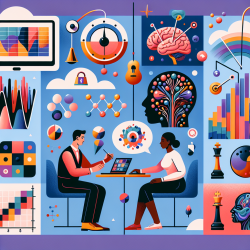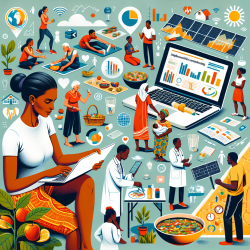Introduction
The rapid growth of social media and digital technology presents unique opportunities and challenges, particularly for Indigenous young people in Australia. The research article "Social media and digital technology use among Indigenous young people in Australia: a literature review" by Rice et al. (2016) provides valuable insights into how these technologies are utilized by Indigenous youth and their potential impacts. As practitioners in the field of speech-language pathology, understanding these dynamics can enhance our approach to supporting young people in achieving positive outcomes.
Key Findings
The literature review identifies several themes regarding the use of social media by Indigenous young people:
- Identity Formation: Social media platforms allow Indigenous youth to express and affirm their cultural identities. This can foster a sense of belonging and community, which is crucial for mental health and educational success.
- Power and Control: Digital technology provides Indigenous youth with tools to create and share content, empowering them to control their narratives and engage in self-directed learning.
- Cultural Compatibility: The multimedia nature of digital platforms aligns well with Indigenous cultures, which are traditionally oral and visual. This compatibility enhances engagement and learning.
- Community and Family Connections: Social media facilitates connections with family and community, reinforcing social support networks that are vital for well-being.
Implications for Practice
As practitioners, leveraging these insights can guide our interventions and support strategies:
- Incorporate Digital Tools: Utilize digital platforms to create engaging and culturally relevant content that resonates with Indigenous youth.
- Promote Positive Identity: Encourage the use of social media to explore and affirm cultural identity, which can enhance self-esteem and resilience.
- Facilitate Community Engagement: Support initiatives that use social media to strengthen community ties and promote health and educational outcomes.
- Address Negative Impacts: Develop educational programs to mitigate risks such as cyberbullying and cyber racism, ensuring safe and positive online experiences.
Future Research Directions
Further research is needed to explore how digital technologies can be harnessed to maximize positive outcomes while minimizing negative impacts. This includes examining the effectiveness of social media-based interventions in health promotion and education.
To read the original research paper, please follow this link: Social media and digital technology use among Indigenous young people in Australia: a literature review.










